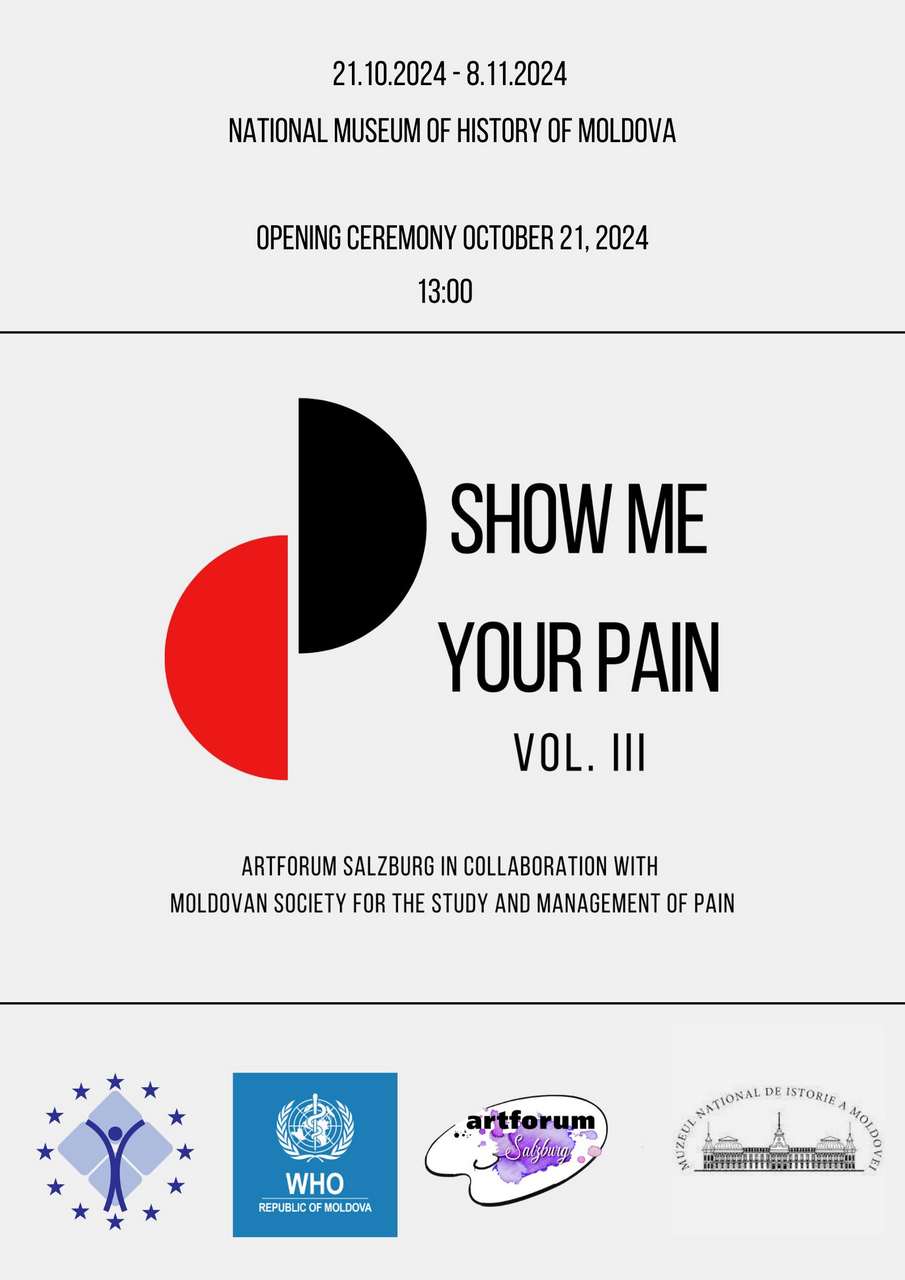
The National Museum of History of Moldova, in partnership with the Society for the Study and Management of Pain in Moldova, is excited to announce the event "Show Me Your Pain Vol. III" on October 21, 2024, at 1:00 PM in the museum's ground floor hall.
The Event "Show Me Your Pain Vol. III" innovatively combines art and medical science to raise awareness about the importance of communication in healthcare, particularly in pain management. This event marks the third edition of the "Show Me Your Pain" series, which debuted at a medical seminar in March 2024 in Salzburg, Austria, attracting an international audience of healthcare practitioners and communication specialists.
This exhibition will expand on the original concept by integrating new elements based on feedback and outcomes from the Salzburg event, organized in collaboration with Art Forum Salzburg. The showcased artworks will include paintings that reflect the subjective pain experiences of volunteers, accompanied by data collected through a standardized questionnaire. Sensory descriptors such as smell, taste, touch, and sound will be used to provide a nuanced description of the pain felt, offering visitors an immersive experience. Attendees will have the opportunity to view the paintings, taste what volunteers have associated with pain, smell corresponding aromas, and listen to sounds related to the pain experiences of the volunteers.
Additionally, "Show Me Your Pain Vol. III" in Moldova will feature interactive sessions where visitors can engage directly with the artists and participants who contributed to the displayed creations. These sessions will encourage the exchange of experiences and reflections on how we perceive and express pain, both individually and collectively. Experts in pain management, psychologists, and communication specialists will also lead discussions on topics such as the influence of cultural and social factors on pain perception, gender differences in the manifestation and treatment of pain, and the importance of personalized treatment to improve patients' quality of life.
The event aims to create a space for learning and exploration, where science and art converge to provide a deeper understanding of pain and its impact on daily life. The public is invited to participate actively, share their own perspectives, and contribute to an open and honest conversation about this often-overlooked health issue.
Through this unique combination of art, technology, and science, we hope to open new avenues of communication and understanding for both medical professionals and the general public, providing an innovative and inclusive framework in which pain experiences are transformed into art.
The exhibition will be open for viewing until November 8, 2024
 31 August 1989 St., 121 A, MD 2012, Chisinau, Republic of Moldova
31 August 1989 St., 121 A, MD 2012, Chisinau, Republic of Moldova



















































